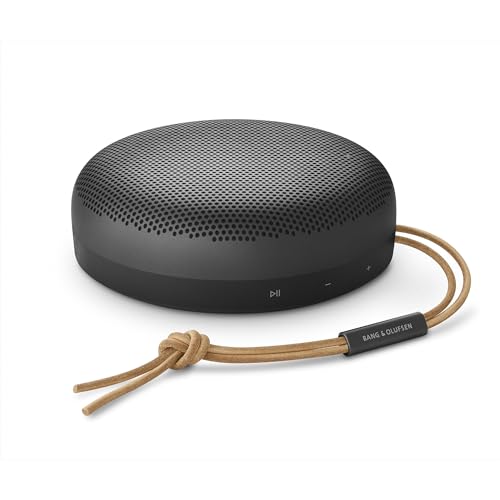When a Bluetooth speaker is praised for clear sound, it’s usually a sign that it nails the fundamentals: vocals are crisp, instruments sound distinct, and nothing feels buried or blurred.
Clarity isn’t about loudness or bass — it’s about separation, presence, and the ability to hear the details that make music come alive.
Almost always a good thing — helps every detail cut through, regardless of genre.
Desirability: -5 Lowest to 5 Highest
So, What Is “Clear” Sound?
Clear sound means the frequencies across the spectrum are well-balanced and well-defined, particularly in the upper midrange and treble. A clear speaker makes it easy to pick out individual elements — vocals, guitars, snare hits — because they don’t smear into one another. It doesn’t have to sound bright or bass-light; it just avoids muddiness and keeps everything distinct.
A good way to think about it:
If muddy sound is like frosted glass, clear sound is like a clean window — you see straight through to the details.
It’s not just about sharp highs — it’s about precision.
Why Do People Like It?
Clarity makes listening more enjoyable and less fatiguing. It brings forward subtle details, improves vocal intelligibility, and allows every layer of a track to breathe. Whether you’re listening to podcasts, acoustic recordings, or detailed instrumental music, clear sound makes everything feel more natural and intelligible.
Clear speakers also tend to perform better in small or reflective rooms, where muddy or bass-heavy models can get overwhelmed.
How Do You Recognize It?
When a speaker sounds clear, everything feels intelligible — you don’t need to focus hard to hear what’s going on. Vocals are upfront, background elements are audible, and instruments don’t step on each other.
Look for:
- Crisp vocals with no veil or haze
- Clean instrument separation, even in busy mixes
- Strong mid and upper-mid presence
- Treble that adds definition, not harshness
- Tight bass that doesn’t muddy the mids
You might not even notice the clarity right away — and that’s a good thing. It just sounds right.
What Causes Clear Sound?
Clarity is often the result of balanced tuning, well-controlled bass, and good treble extension — combined with decent quality components that reproduce transients accurately. A speaker doesn’t have to be expensive to sound clear, but it does need smart engineering.
Common factors include:
- Smooth, flat midrange response (~500Hz–2kHz)
- No excessive low-mid bump
- Treble extension without harsh peaks
- Decent transient response (notes start and stop cleanly)
- Low distortion at moderate volumes
Which Genres Benefit Most?
Clarity benefits nearly every genre, but it really shines with content that relies on vocals, natural instruments, or dense arrangements. It’s also a must-have for spoken word — podcasts, audiobooks, voice notes — where intelligibility is everything.
Ideal for:
Even bass-heavy genres sound better when the bass doesn’t drown everything else out.
Bluetooth Speakers Known for Clear Sound
These speakers stand out for their clarity — not just in lab specs, but in real-world listening. Each of them delivers strong detail, excellent midrange presence, and natural separation, without sounding overly sharp or clinical. We’ve included a Clarity Score (out of 5) based on their ability to reveal nuance across a range of content.
This compact speaker is one of the clearest in its class, offering impressive instrument separation and treble detail. Vocals sound clean and open, and the soundstage feels wide and focused. It performs especially well in near-field listening.
Despite its warm leanings, the Flex 2 has excellent vocal clarity and midrange precision. It handles acoustic tracks and podcasts beautifully, and the highs are clean without being harsh. A great all-rounder with a smooth but articulate delivery.
With its forward mids and refined tuning, the Roam handles voices and complex arrangements with ease. It doesn’t have huge bass, but that works in its favor here — everything feels intentional and controlled, especially at moderate volumes.
Note: These clarity scores are subjective and based on perceived midrange transparency, treble detail, and separation. Sound perception may vary depending on listening distance, content type, and room acoustics.
How to Improve Clarity (If You Can)
If your speaker has a custom EQ, it’s possible to bring out more clarity — especially if the default tuning is overly warm or boomy. You’re aiming to clean up the mids and sharpen the top end slightly.
Try this:
- Cut slightly around 250–400Hz to reduce mid-bass congestion
- Boost slightly around 2–4kHz for vocal and instrument presence
- Add a small boost around 8–10kHz for air and detail
Avoid extreme cuts or boosts — clarity is about balance, not brightness.
Related Sound Characteristic: Muddy
Clarity and muddiness are often two ends of the same spectrum. Muddy sound lacks definition and blends frequencies together, while clear sound keeps things separated and intelligible. If you feel like you’re constantly straining to hear lyrics or details, it’s probably a clarity issue — and moving toward a clearer speaker can make all the difference.
Final Thoughts
Clarity is one of the most rewarding traits in a Bluetooth speaker — and one of the easiest to appreciate once you hear it. It doesn’t always get the spotlight in marketing materials, but for real-world listening, clear sound is what helps music connect and conversations stay intelligible. Whether you’re a detail lover or just want your podcasts to sound less muffled, clarity is a trait worth prioritizing.
If you’ve ever said a speaker sounds “sharp,” “clean,” or “easy to understand,” what you’re hearing is clarity — and it’s a beautiful thing.


